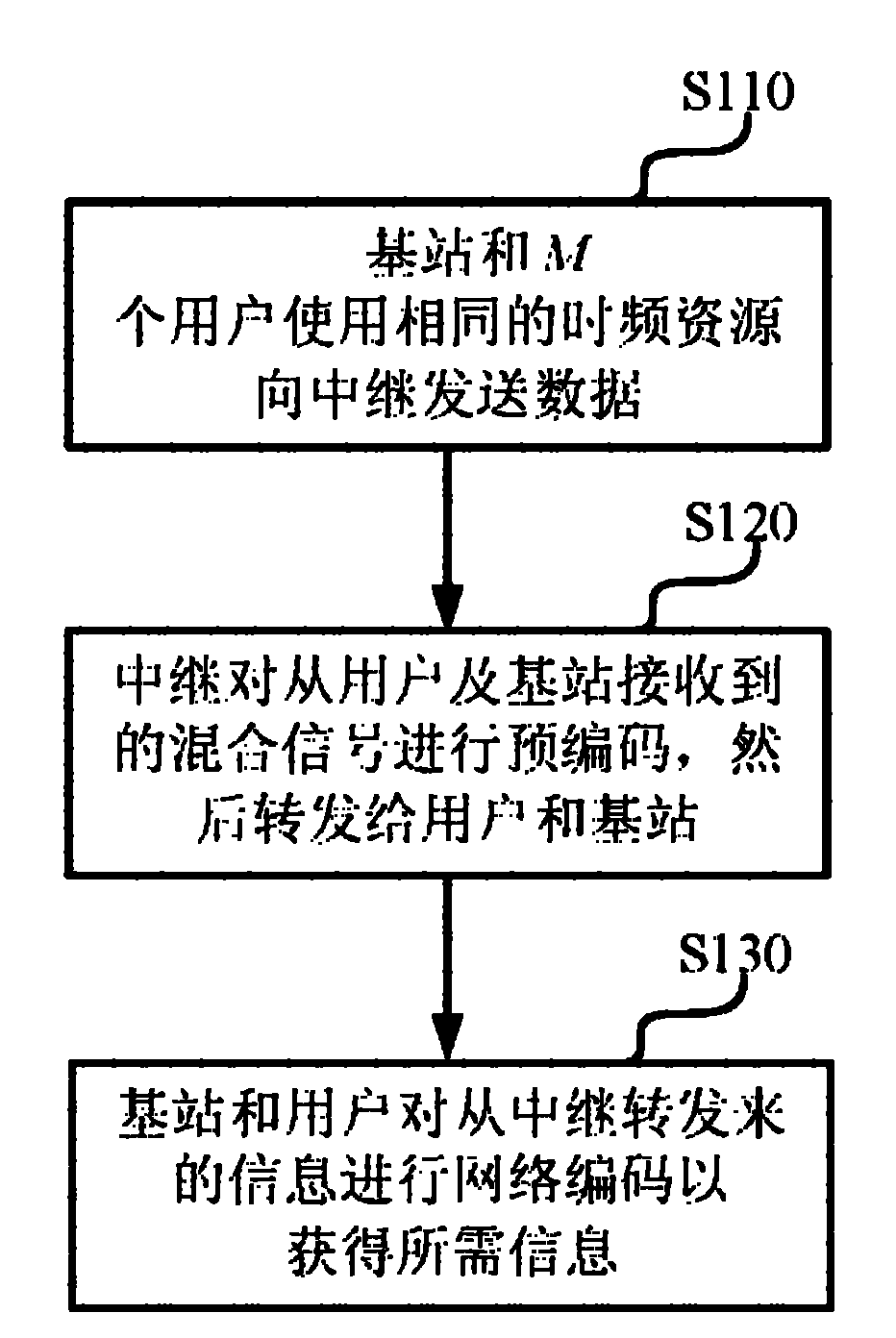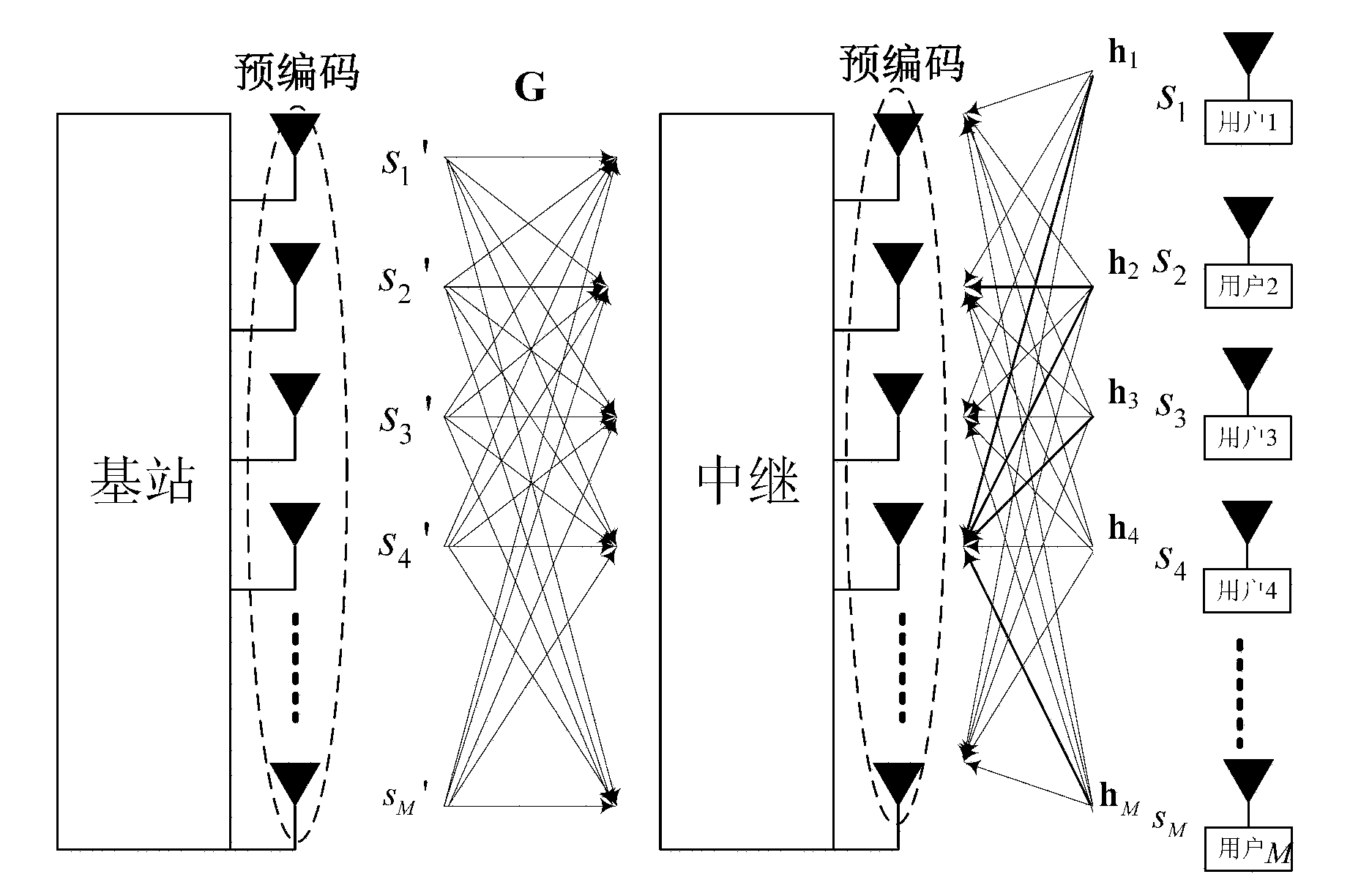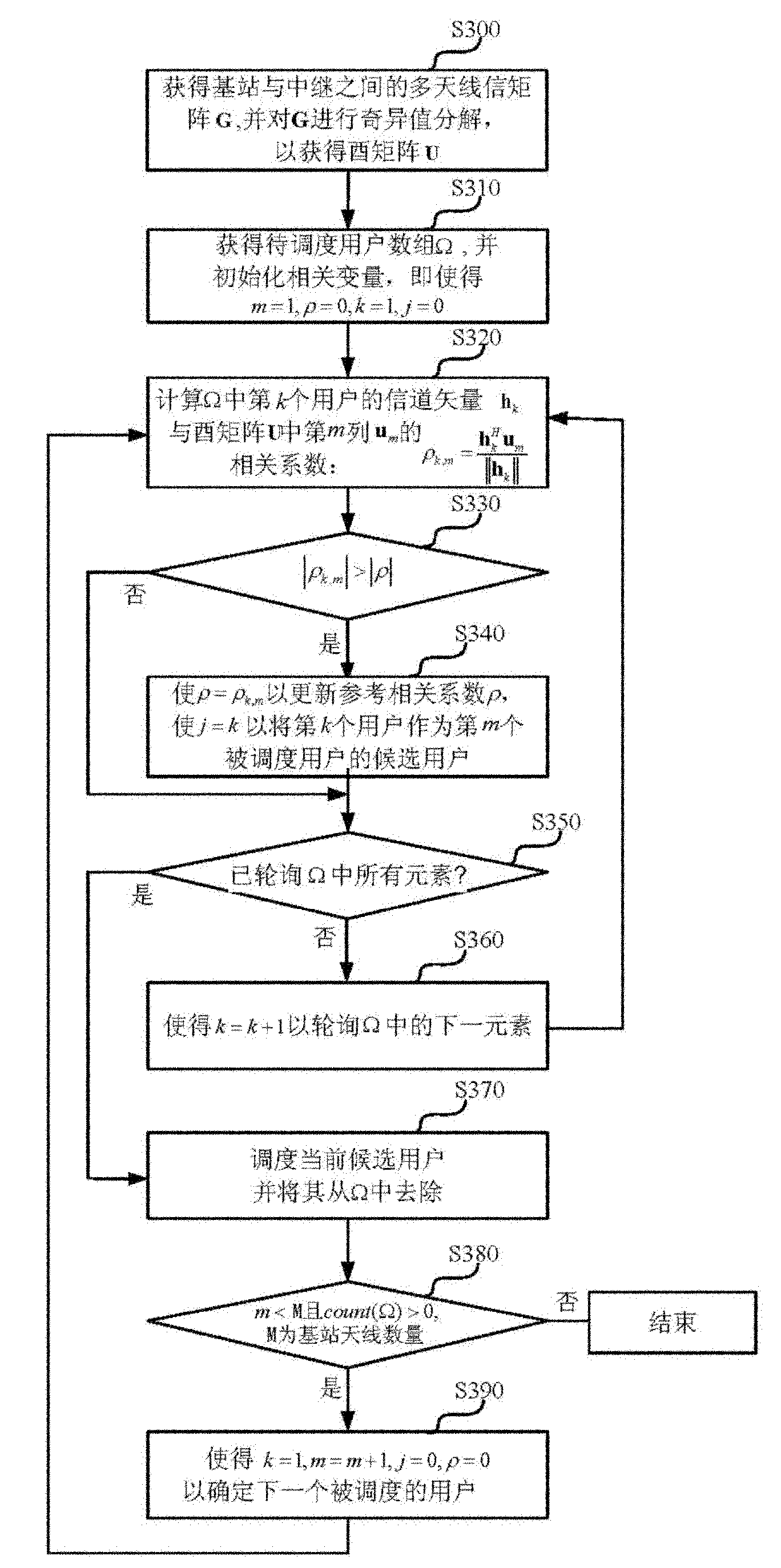User scheduling method of wireless bidirectional trunk network coding system
A user scheduling and network coding technology, applied in wireless communication, electrical components, etc., can solve problems such as the inability to guarantee high spectral efficiency of relay transmission, the inability to effectively improve system spectral efficiency, and uncertain performance gain, so as to improve system throughput , Guarantee user fairness, facilitate cost and marketization effect
- Summary
- Abstract
- Description
- Claims
- Application Information
AI Technical Summary
Problems solved by technology
Method used
Image
Examples
no. 1 example
[0101] This embodiment proposes a user scheduling method for a wireless two-way relay network coding system. Using this method, when the base station or the relay is scheduling users, first the base station and the relay obtain the channel matrix between the base station and the relay through channel estimation, and decompose the singular value of the channel matrix to obtain a unitary matrix U, which is polled with the base station All users to be scheduled in the corresponding cell, more specifically, for each column vector u in the unitary matrix U m , respectively calculate the channel vector h between each user to be scheduled and the relay k with u m The correlation coefficient ρ between k,m , select each user to be scheduled |ρ k,m |The largest user is scheduled to determine at most M users who use the same time-frequency resources to send data to the relay, so as to complete the scheduling, where m is a natural number less than or equal to M, and m is the sequence n...
no. 2 example
[0129] Combine below Figure 4 A second embodiment will be described. Here, only the differences from the first embodiment are emphasized. Unless otherwise specified in this embodiment, all technical means in the first embodiment can be applied to this embodiment. In addition, in this embodiment, the same reference numerals as those in the first embodiment are used for steps that are the same as or similar to those in the first embodiment.
[0130] Step S400:
[0131] The base station or the relay obtains the multi-antenna channel matrix G=[g 1 , g 2 ,..., g M ], however, different from the first embodiment, in this embodiment, no singular value decomposition is performed on the channel matrix G.
[0132] Step S420:
[0133] Poll the kth user in Ω, and calculate the uplink channel vector h between the kth user and the relay by expression (12) k (h k is M×1 dimensional vector) and g m The correlation coefficient ρ k,m ,
[0134] ρ k...
PUM
 Login to View More
Login to View More Abstract
Description
Claims
Application Information
 Login to View More
Login to View More - R&D
- Intellectual Property
- Life Sciences
- Materials
- Tech Scout
- Unparalleled Data Quality
- Higher Quality Content
- 60% Fewer Hallucinations
Browse by: Latest US Patents, China's latest patents, Technical Efficacy Thesaurus, Application Domain, Technology Topic, Popular Technical Reports.
© 2025 PatSnap. All rights reserved.Legal|Privacy policy|Modern Slavery Act Transparency Statement|Sitemap|About US| Contact US: help@patsnap.com



